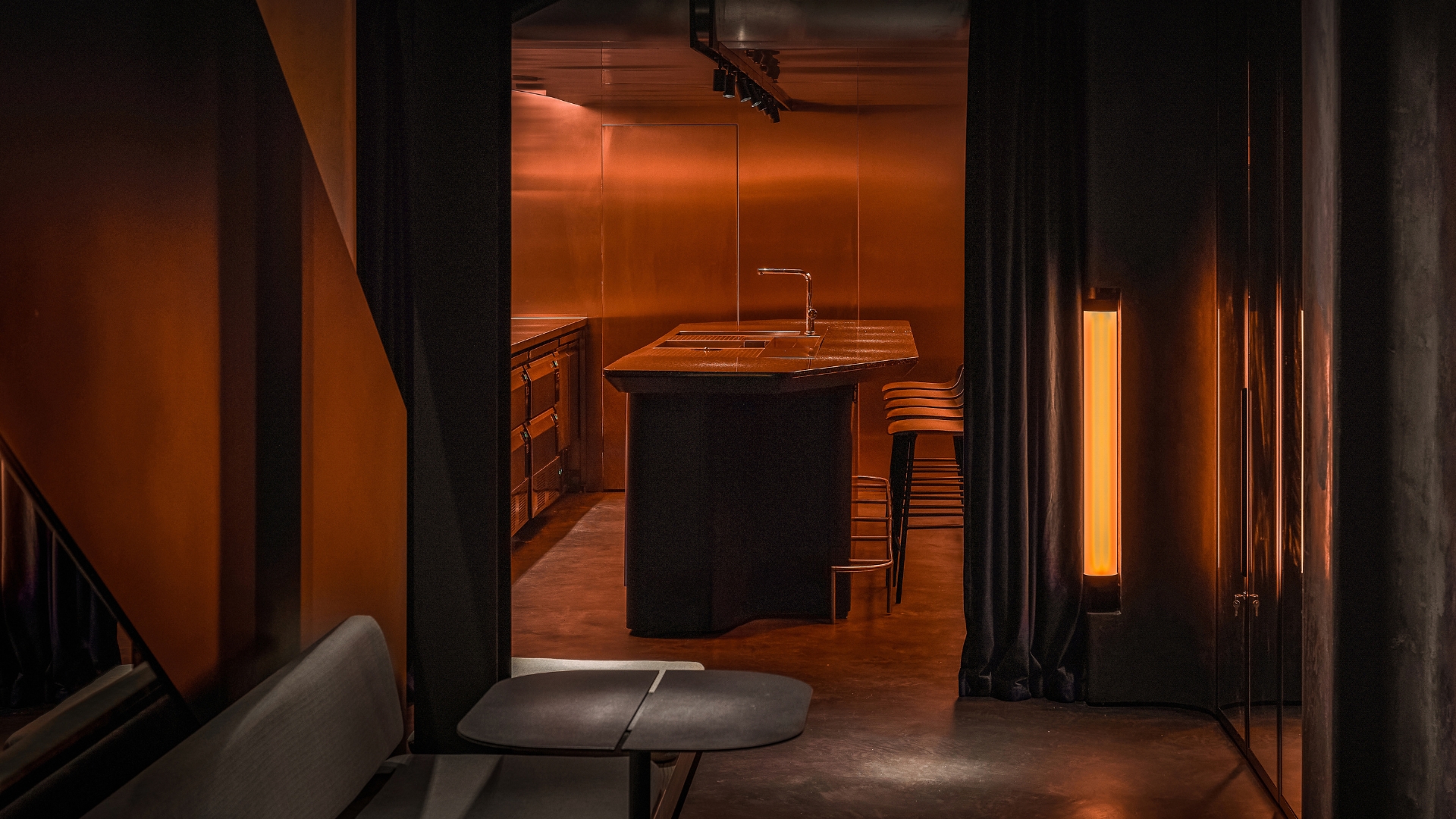
Great Taste is the Livingetc column spotlighting the human stories behind the restaurants where the interior design is as good as the food, as told by the chefs, designers, and founders who contributed to their success.
There is a sense of excitement in the streets of central London as I step out of the underground station and walk north towards Kinkally, the Georgia-inspired, sleekly modern restaurant founder Diana Milicki opened in December 2023 as a testament to her long-term appreciation of the country's culture and cuisine. Although the sun-filled, balmy atmosphere of this early August evening certainly helps to set the scene, I can't help but think about how much Fitzrovia's rectangular stretch of city — sandwiched between the affluent Marylebone and Bloomsbury right above Soho — embodies everything I associated with London long before moving here. From hip art galleries reviving the stuck-in-time, textured brick facades of the British capital and vintage boutiques, to gastro pubs pullulating with off-duty socializers and exclusive restaurants constellated by guests lively dining alfresco, this is where the party's at.
Situated on Charlotte Street, Kinkally has recently joined the district's award-winning culinary frenzy: Michelin starred restaurants Pied a Terre, The Ninth, Norma, and Kitchen Table are all next-door neighbors, while acclaimed Scottish-Italian chef Nico Simeone's ever-changing tasting menu destination Six by Nico has been active in the area since spring 2020. For Diana and her partner Alexander Milicki, who didn't just co-found Kinkally, but both enthusiastically buzz around its tables at rush hour, Fitzrovia is "an incubator of ideas". Sparked by their recurring visits to Georgia, a country whose ancient, rich heritage and rising gastronomy scene they say are still widely overlooked in the British capital, the restaurant design reinvents both through the filter of stylish minimalism — except for chef David Chelidze's flavor-packed, ingenious menu.
Below, we sit down with Diana and DA BUREAU's head architect Maria Romanova to discuss the conception of Kinkally, how it bridges the West and the East, and hopes to stay with customers long after they have cleared the bill.
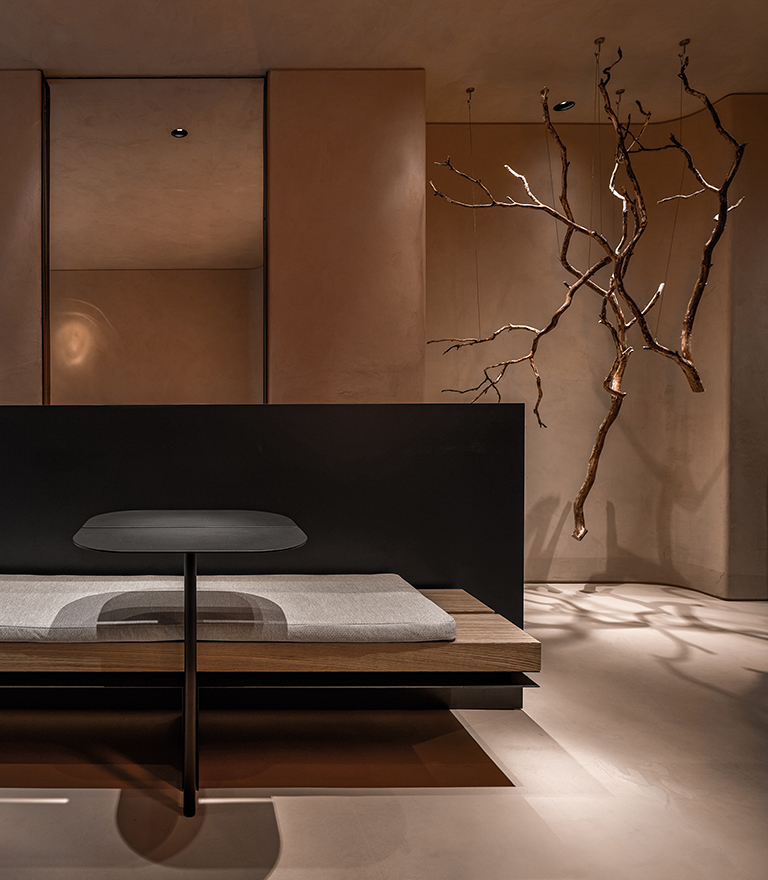
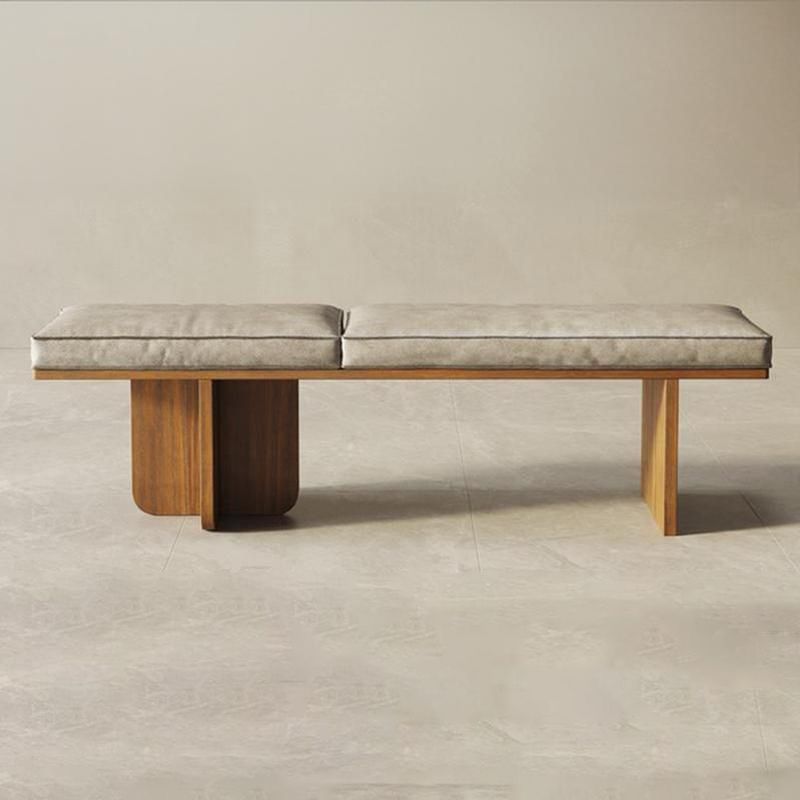
Get the look
Size: 55"L x 13"W x 18"H
Material: Upholstered
Price: $733.07 (was $1720.94)
Diana, were does your interest in Georgia stem from and what would you say propelled it?
Diana Milicki: With its centuries-old history, Georgia is beautiful as few other places. And I am not just talking about the nature or the architecture, but about the people, the food, the hospitality — all of those things. To be able to witness it as it is now at its most authentic, when European or American trends are yet to catch up on it, feels quite unique. Having spent part of my childhood and early teens in Russia, I was familiar with Georgian food and culture, but it was only when I decided to visit it with my partner Alexander that we realized how much it had to offer; how it even exceeded our expectations. We were already living in London at the time, and it wasn't too far away from here, so we just started exploring it. When we got there, we were massively shocked: words alone will never be enough to do justice to this country.
What was your first "taste" — and impression — of contemporary Georgian culture?
DM: My mom used to cook me khinkali when I was a kid, which is a dish originating from the mountain regions, so I wasn't completely new to Georgian cuisine. What caught me by surprise while visiting over time was seeing how quickly the local culinary scene is transforming: over the last few years, homey, small cafes that felt like stepping into someone's house morphed into underground architectural and design gems.
We have seen the hospitality sector grow massively, and plenty of cool concepts emerge as a result, many of which could easily work in London. These new hotspots are redefining what Georgian food looks and tastes like, which is exactly what prompted us to think: if Georgia is putting a twist on its traditional staples, why not try to take them outside [of it] too? Georgia cuisine values tradition, and I massively appreciate the efforts to preserve it as it is. Think about how beautiful London is because of the energy that goes into looking after its architectural buildings and local identity: to me, that proves there is nothing wrong about protecting the past. Still, this doesn't mean that adding something new to it will necessarily betray the regional story of a place.
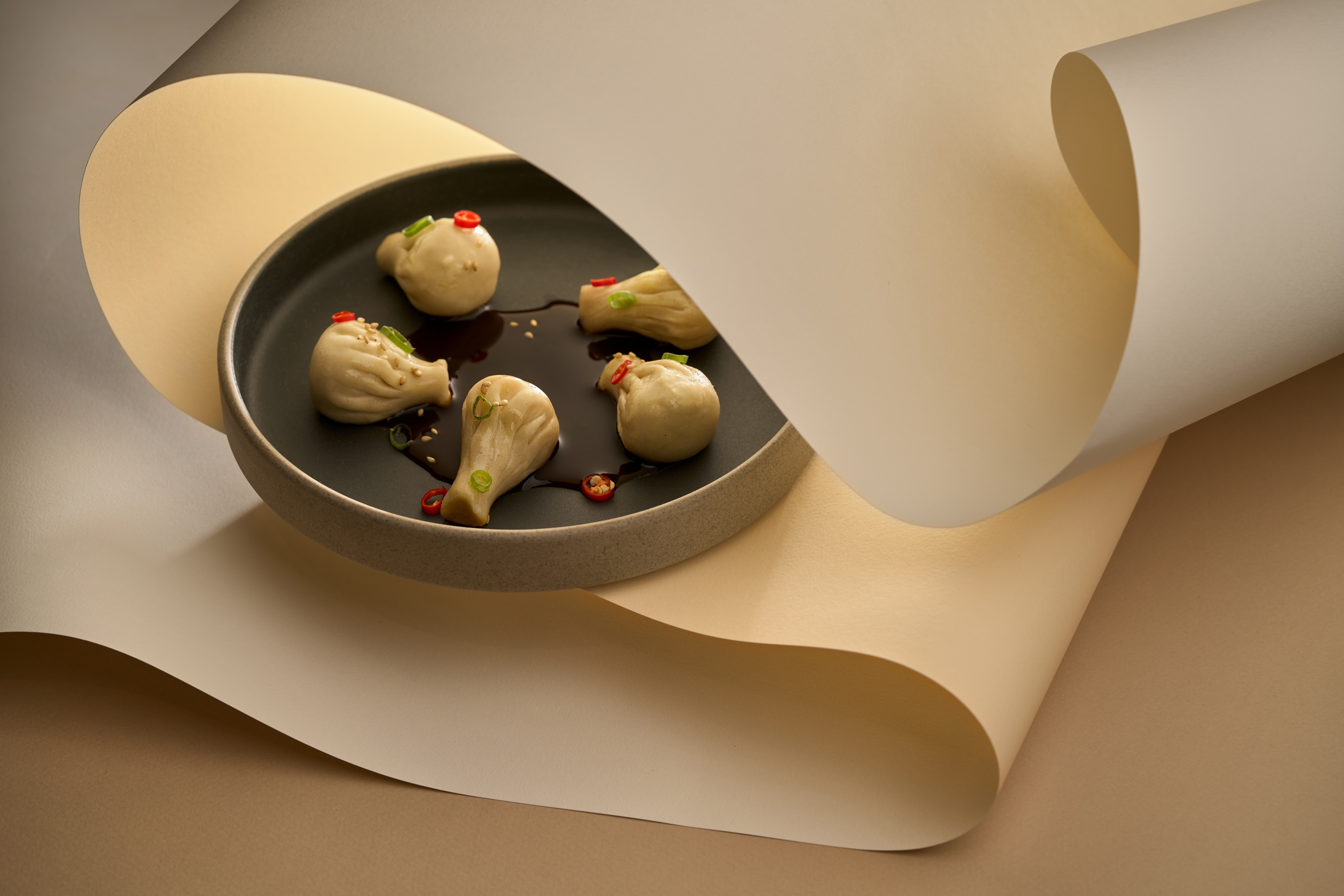
What makes Charlotte Street, and Fitzrovia more widely, the ideal location for Kinkally?
DM: Alexander and I spent months looking for the right spot which, being this our first hospitality project, was difficult as estate agents tend to trust more established concepts over something brand new. If having a convincing presentation and a detailed financial model was a good start, what helped us secure our current location was, largely, pure luck. As I researched the space, I knew that opening a restaurant outside of the Golden Triangle of Marylebone, Mayfair, and Soho would make it "a destination", and that being central would be beneficial to it. Soho felt too saturated to me, Mayfair too harsh and upscale, with its own target market. Being Marylebone mostly residential, there are very few offices around and, while it is bustling during brunch and afternoon time as well as throughout the weekend, it can be quite quiet at night. Fitzrovia on the other hand is an incubator of ideas.
Sitting above Soho and right next to Marylebone, it has this interesting crossover: it is half residential, half office spaces, which works well for us as we are planning on introducing lunches later this year. As for Charlotte Street itself, there are four Michelin starred restaurants on it within 200 meters' distance. Originally, we were in talks for a place on Windmill Street, which is a bit calmer but adjacent to Charlotte Street, however the deal fell through. When the agent called me to let me know they had this place available instead, I didn't think about it twice. I said, "I know the street — that's all that matters". Unfortunately for DA BUREAU and Maria specifically, it was a difficult space to work around, all angles, curves, and vaults. It took a great team effort to make it look as nice as it looks today. Isn't that right, Maria?
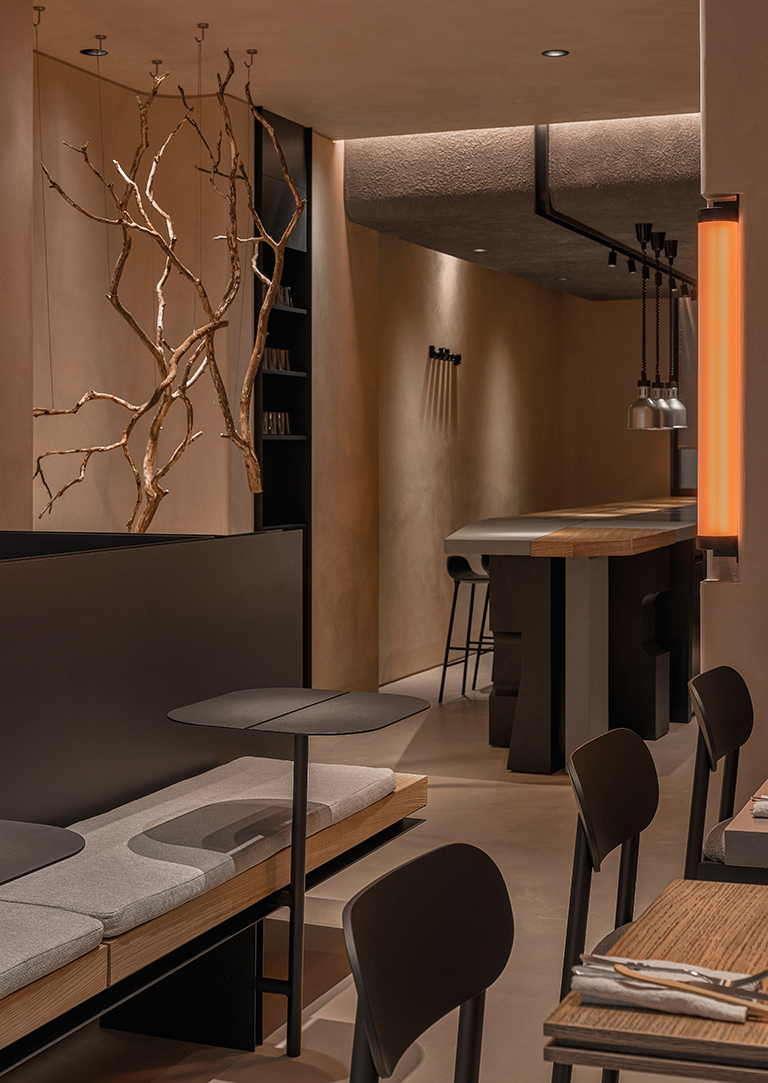
Maria Romanova: It was a challenge, but we got there in the end. As Diana explained, Kinkally is first and foremost "a twist", a change of direction, which is also reflected in the restaurant's logo. This became the core concept of the story we were trying to tell in our designs for this project. The idea was to capture modern Georgia from a perspective that, drawing inspiration from its geographical position, allowed us to portray it as a watershed between the Western and the Eastern tradition. To do so, we looked for common threads bringing these cultures closer together, and the first one was a love of nature. In Georgia's case, this translates in the Brutalist design-inspired, dynamic, and unprocessed forms of Kinkally, and particularly in the rough stone texture of the open kitchen's counter on the ground level and the asymmetric table in the basement. Echoing the silhouettes of Georgian mountains and caves, these shapes contrast the symmetric, gentle, and ideal lines associated with Asian culture.
Asia is referenced in the elegant metal tables and the softer angles of the walls, which accentuate the uniqueness of the space. Finding a way to embrace the layout of Kinkally was the hardest part: it was a very complicated space geometry-wise and had to be adapted to fulfil two functions — the restaurant and the bar, Kinky, which is situated on the lower floor. The transition had to feel smooth and organic, which is why the latter is completely made of stainless steel and stone, two materials also integrated in the above setup, and has light as its key trait. The design of the bar is in itself a logical continue to Kinkally and its stainless steel kitchen. Every corner was conceived to enhance the dining experience: on the ground floor, the open kitchen steals the show, allowing guests to watch the chef's magic as it unfolds. Downstairs, the first thing that catches your eye is the brightly colored light of Kinky and the just-as-striking cocktail station.
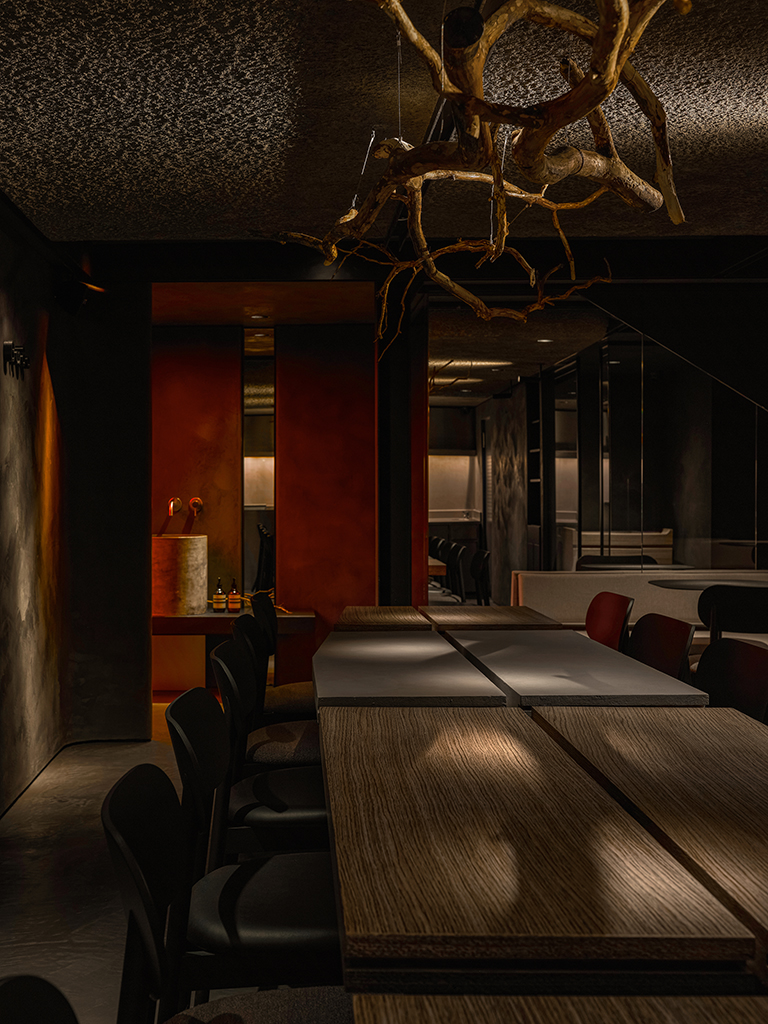
DM: Another reason why we went after that connection with Asia was that the dumplings actually come from China. For us, it felt important to bring this historical element in, and not only through the kitchen, but also in the design elements. When we think of the mountainous areas where this dish was created, the materials that spring to mind are sand, concrete, and the earthiness that comes with them. At Kinkally, we have incorporated them in the restaurant along with metal for an elevated natural feel.
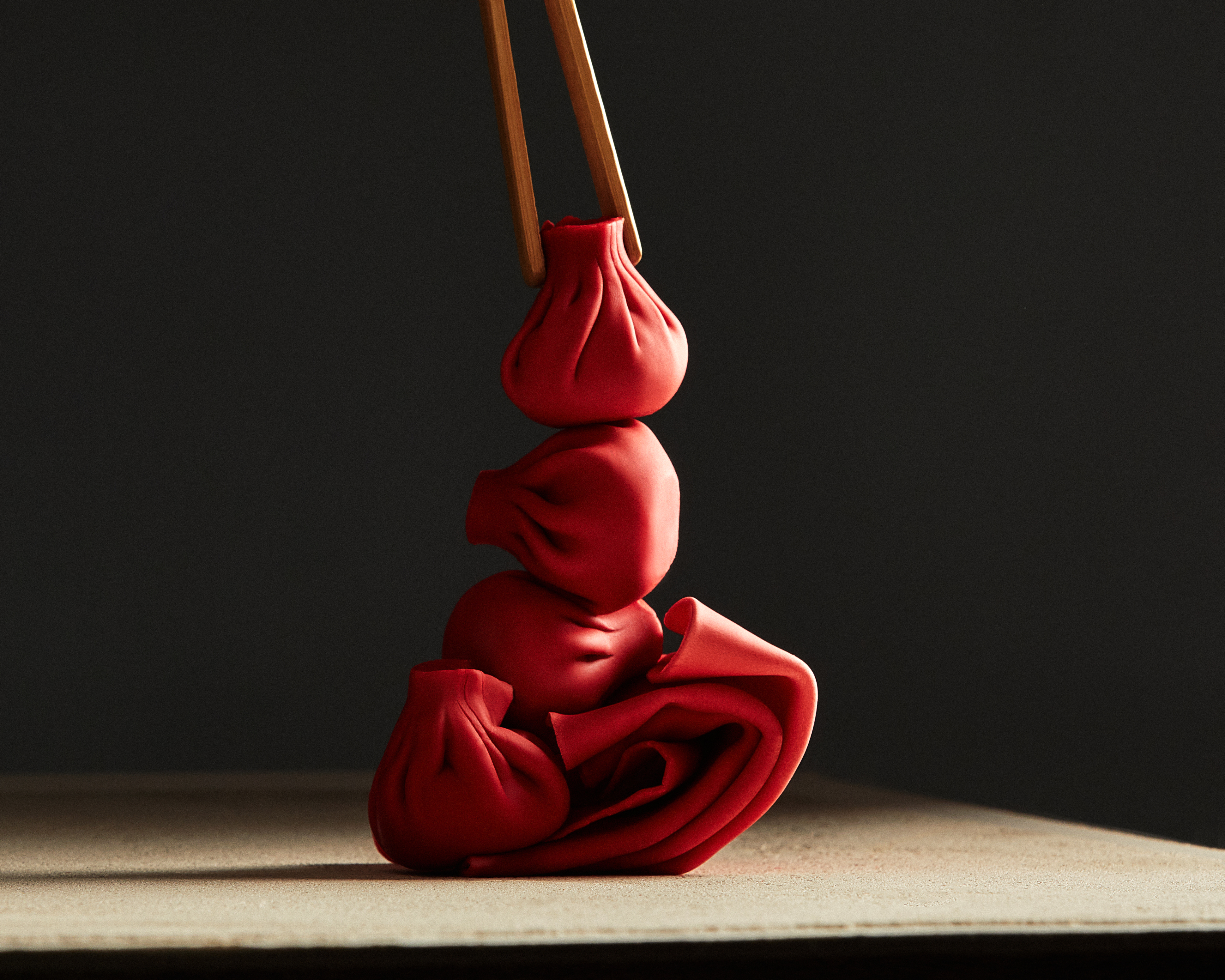
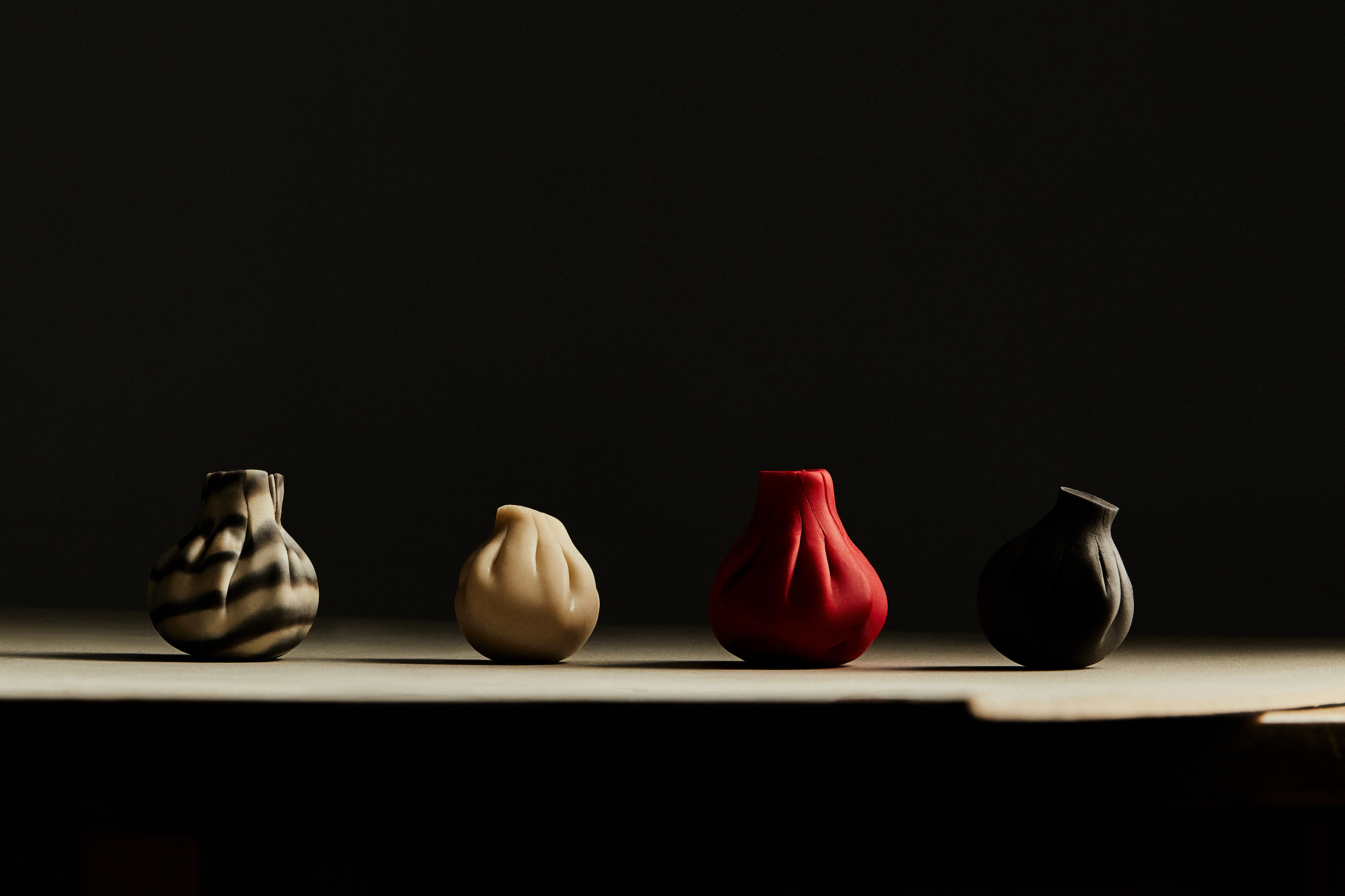
When I visited the restaurant, I was particularly intrigued by the choice of lighting and finishes of bar Kinky, which immerse diners in an electrifying, club-like atmosphere. What was your vision for it, Maria?
MR: At DA BUREAU, light is one of our signature elements; it is something we deem necessary experimenting with in the development of every project. The guiding principle for Kinkally was one: we wanted to celebrate the theatre of food, and to do so, we relied on dramatic lighting to make every dish the "lead actor" of the table. If upstairs the hues reference the soft, pale pink shades of sunrise, when we approach the bar, we are hit by the intensity of sunset and its contrasting nuances. This is emphasized by the clashing orange and purple lights that spread across the big and small room of Kinky, respectively. To remedy the lack of natural light, we played with color to bring out its sexiness. The bar is, in a way, the future capsule of Kinkally — a parallel, suggestive dimension expanding right underneath the restaurant space. The sculpture light positioned on the branches of the plant installations scattered across the place cast graphic shadows on the dining area in a symbolic reminder of the importance of our roots, those of Georgian cuisine, and Asia.
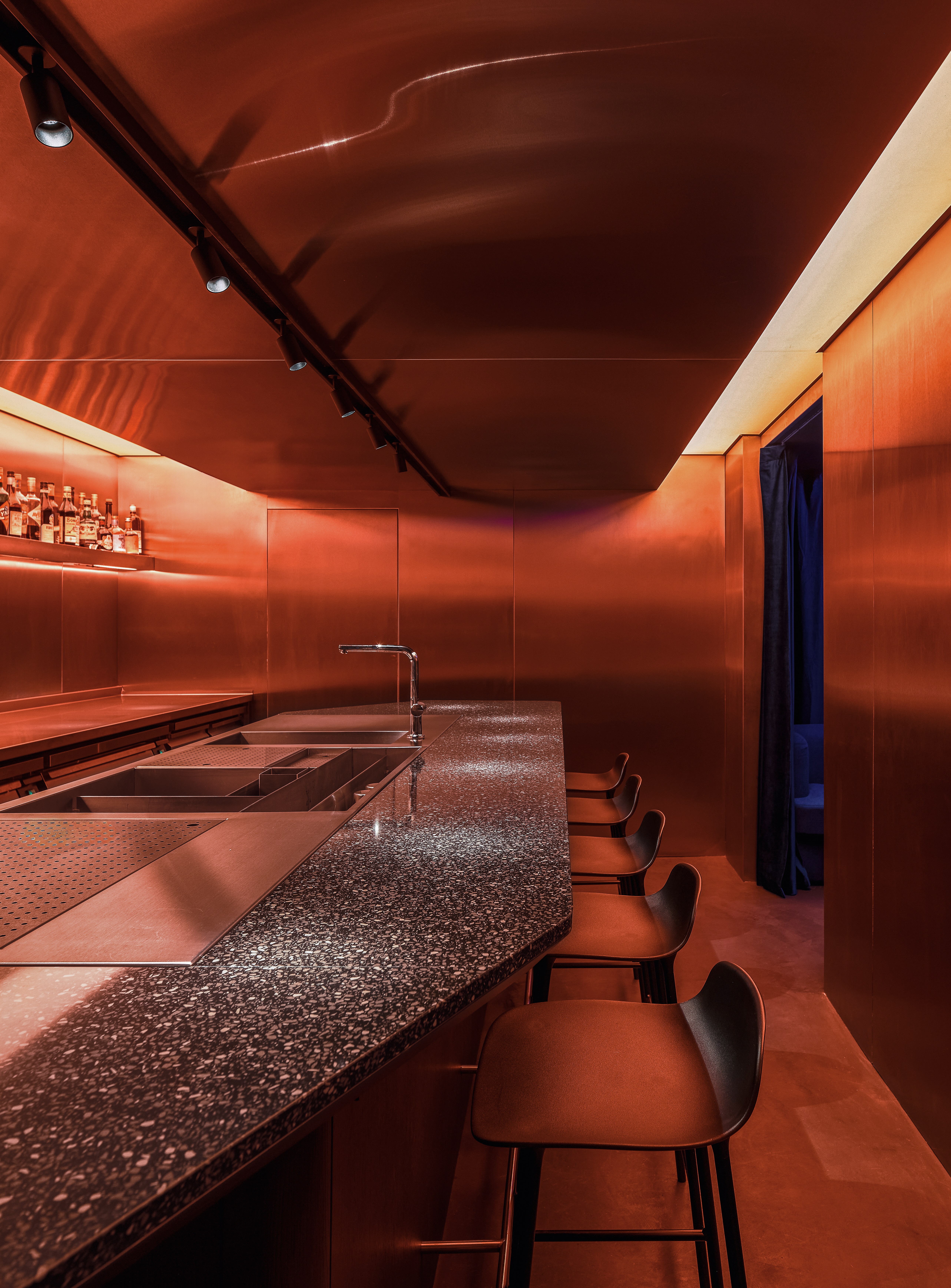
Seeing head chef David Chelidze work on his dishes was the real highlight of my experience at Kinkally. What made him stand out to you for this role?
DM: Again, destiny takes its course. Alexander and I were discussing the project when Instagram faced us with a promoted post of the khinkali David had cooked for another restaurant. We looked at each other and said, "wait a minute, this is exactly what we are thinking about". When I traveled to meet him, it was love at first sight. We were instantly on the same page in relation to our idea of transforming Georgian cuisine, giving it a new beginning through a wider, international stage instead of binding it to the Eastern European world. We were aligned on what to do with it and how to take it forward. So we started communicating and sharing all the details with him. At first, we thought David was going to be more of an executive chef, someone who puts together the menu and trains those who will be working at the restaurant full-time, but over time, we became so attached to this collaboration and the project itself that he chose to move here long-term, take the head chef position, and lead it.

As a fan of traditional Georgian food, opening a restaurant that strives to revolutionize it must have been both inspiring and nerve-racking for you, Diana. How has Kinkally been received so far, and what makes it all worth it?
DM: To realize how friendly everyone that comes to us or works near Kinkally is has been a truly eye-opening experience. Especially considering the number of restaurants on Charlotte Street, we expected people to be very competitive. Instead, we are all supporting each other. Part of my job consists in sharing our vision for Kinkally with diners, as many of them book a table with the idea of eating at a traditional Georgian restaurant. Luckily, Kinkally has been built to ensure the first step in their experience is the storytelling. We explain who we are, what we are, and why we are doing what we are doing. Because, as you said, modernizing Georgian food is a risky move, we always feel the need to stress that ours is a modern interpretation of it, informed by traditional recipes. At the end of every meal, should the customers be interested in it, we are always open to recommending some of our favorite old-style Georgian places.
We want visitors to get interested in the core elements of Georgian gastronomy, and especially its bursting-with-flavors, shareable dishes. This is something we cultivate in our offering of small plates, which allows you to enjoy a varied tasting experience. But it doesn't end there: the goal is to pave the way for people's discovery of Georgia, full stop. The best thing that ever happened to us was seeing two guests book flights to Tbilisi while dining with us — that was a clear sign that we are doing something right.

What are you hoping to contribute to Fitzrovia?
DM: I believe London's hospitality industry to have huge potential. Compared to that of other cities and countries, there is still so much that can be done within it, and opening Kinkally was our first step in that direction. For us, it is not about just focusing on the service, the culinary offer, or the design, but about bringing them all together. We want to provide everyone who chooses to eat out instead of cooking at home a transformative experience, one that sticks with you for a lifetime. I often ask the team, "when does the experience of a restaurant start?" Some of them say it is when you sit at the table, others, when you are greeted by the host. Someone argued it begins with the booking process. To me, it starts as soon as you hear about a restaurant for the first time, whether because you come across it on Google or discover it through word of mouth. That's when the experience starts shaping, and with it come a number of expectations, feelings, and emotions that anticipate your visit to it.
I also ask them, "when does it end?" Again, people said it ends when you pay the check or walk through the door. My answer is never: you keep the memory of coming to this place forever. And if you do, that means you are going to come back, and that this place is going to be successful thanks to regular customers who keep visiting and exploring our menus with us, eventually becoming part of the Kinkally family and our long-term journey.







